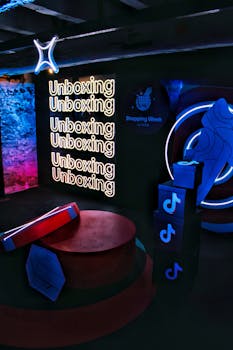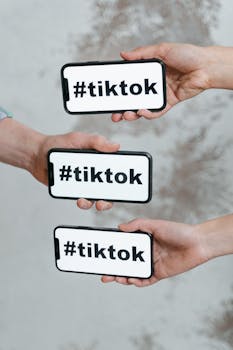The landscape of entertainment has dramatically transformed, primarily due to the advent of digital tools. From streaming services to social media, these innovations have changed how we consume, share, and create entertainment.
Digital tools have not only made entertainment more accessible but have also empowered creators to reach global audiences. This shift has redefined traditional boundaries and altered consumer experiences in significant ways.
As we delve deeper into this topic, we will explore the various facets of digital tools in entertainment, examining their influence on content creation, distribution methods, and audience engagement.
Transforming Content Creation
The creation of content has evolved from a studio-dominated process to a more democratized model. Digital tools enable anyone with a computer and an internet connection to create high-quality content.
Innovative software for video editing, graphic design, and music production allows creators to express their visions easily. This accessibility has led to an explosion of diverse content across various platforms.
Furthermore, user-generated content has risen dramatically, altering traditional power dynamics. Platforms like YouTube and TikTok allow creators to share their work, gaining followers and recognition without formal backing.
As a result, a wider spectrum of voices and perspectives is now evident in the entertainment industry. This diversity enriches the content landscape and engages audiences more meaningfully.
In this digital age, collaboration has also transformed. Artists from different disciplines can now come together online, creating innovative projects that push creative boundaries outside traditional venues.
Shifting Distribution Models
The distribution of entertainment content has transformed considerably with digital tools. Streaming services like Netflix and Hulu have minimized the need for physical media, providing immediate access to vast libraries.
This shift has disrupted traditional television and film distribution models, leading to a decline in cable subscriptions. Consumers now prefer on-demand options that suit their schedules, promoting a culture of convenience.
Moreover, digital distribution channels often provide more competitive pricing. With a subscription model, audiences can access a plethora of content for a monthly fee, appealing to budget-conscious viewers.
Social media platforms have also fostered new avenues for distribution. Creators use these channels to promote their content, reaching potential viewers directly and eliminating intermediaries.
As audiences engage with content online, providers must adapt to enhance user experience through personalized recommendations and seamless access across multiple devices, ensuring a cohesive viewing experience.
Audience Engagement Reimagined
Digital tools have dramatically revolutionized how audiences interact with entertainment. Social media platforms allow fans to engage directly with creators and participate in conversations about their favorite content.
Live streaming events, such as concerts and gaming tournaments, offer real-time engagement, fostering a sense of community among viewers. This interaction creates lasting relationships between creators and their audiences.
Furthermore, user feedback plays a crucial role in shaping content. Creators can rapidly assess audience preferences, allowing them to tailor their work to better meet viewers’ needs.
Moreover, the rise of interactive content, such as video games and choose-your-own-adventure films, enables audiences to take part in storytelling actively. This innovation enhances not only engagement but also viewer investment in narratives.
As a result, the traditional barrier between audience and creator has diminished, leading to a more immersive entertainment experience where each audience member feels valued and important.
The Role of Social Media in Entertainment
Social media’s impact on entertainment is profound and multifaceted. It provides platforms for promotional strategies, allowing creators and companies to connect with their target audience effectively.
Various social media channels foster user communities around specific interests, enhancing fan engagement with franchises or genres. This communal element strengthens loyalty and encourages continuous content consumption.
Additionally, trends often originate on social media, influencing the mainstream entertainment landscape. Viral challenges or memes can propel lesser-known content into the spotlight, showcasing diverse voices.
Moreover, monetization options on social media enable creators to generate income directly through their audiences. Platforms like Patreon and TikTok’s Creator Fund offer financial support opportunities that empower creators.
In this evolving ecosystem, the synergy between social media and entertainment continues to grow, reshaping how content is produced, distributed, and consumed on a massive scale.
The Emergence of Virtual Reality and Augmented Reality
Virtual reality (VR) and augmented reality (AR) tools have emerged as game-changers in the entertainment sector. By offering immersive experiences, they transport audiences to entirely different worlds, transforming storytelling.
VR technology allows users to engage with content in ways that traditional media cannot replicate. This heightened interactivity captivates audiences and provides a unique sense of presence.
On the other hand, AR enhances real-world environments by overlaying digital elements, creating engaging and interactive experiences. This innovation enriches events, gaming, and marketing campaigns.
Furthermore, both VR and AR are increasingly being used in education and training, blending entertainment with learning experiences. This multifaceted application showcases their potential beyond mere leisure activities.
As technology evolves, we can anticipate even more sophisticated applications of VR and AR in various entertainment segments, revolutionizing how we perceive and engage with content.
Challenges Posed by Digital Tools
Despite numerous advantages, the rise of digital tools for entertainment presents significant challenges. Issues such as content saturation lead to increased competition for audience attention, making it harder for creators to stand out.
Copyright infringement and piracy are also serious concerns in the digital realm. Protecting intellectual property becomes challenging as content is easily shared and distributed across numerous platforms.
Additionally, the rapid pace of technological change can be daunting for older generations or less tech-savvy individuals, creating a digital divide that may leave some audiences behind.
Moreover, the over-reliance on data and algorithms can lead to homogenized content, limiting diversity and creative expression in favor of what is deemed commercially viable.
As the industry navigates these hurdles, it’s crucial to strike a balance between innovation, creativity, and ensuring equitable access to the benefits brought by digital tools.
Conclusion
Digital tools have reshaped the entertainment landscape, creating new opportunities for innovation and engagement. From content creation to distribution and audience interaction, the transformations are profound and ongoing.
While challenges exist, embracing digital tools holds potential for a more inclusive and diverse entertainment future. By addressing these hurdles, creators can continue to innovate and inspire.
The future of entertainment undoubtedly lies in the hands of those willing to adapt to this new digital era, harnessing its advantages to connect with audiences worldwide.


